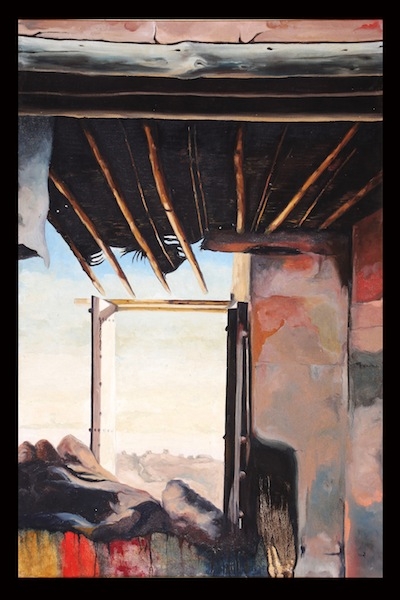ArtReview sent a questionnaire to artists and curators exhibiting in and curating the various national pavilions of the 2015 Venice Biennale, the responses to which will are being published daily in the lead-up to the Venice Biennale opening.
Hoor Al Qasimi is curating the United Arab Emirates pavilion. The pavilion is in the Arsenale.
What can you tell us about your exhibition plans for Venice?
In 1980 – Today: Exhibitions in the United Arab Emirates, I am looking at the emergence of contemporary art practices in the UAE over the past four decades. Rather than taking a monolithic or one-sided approach, I wanted to create a more multifaceted narrative, exploring a range of works by artists from different generations, backgrounds, styles and techniques. An important connecting thread is the Emirates Fine Art Society, a non–profit association that was formed in 1980 in Sharjah that played a critical role in the development of arts and culture in the UAE and the region. The 15 selected artists – all Emirati – include Ahmed Al Ansari, Moosa Al Halyan, Mohammed Al Qassab, Abdul Qader Al Rais, Abdullah Al Saadi, Mohammed Abdullah Bulhiah, Salem Jawhar, Mohammed Kazem, Dr. Najat Meky, Abdulraheem Salim, Ahmed Sharif, Hassan Sharif, Obaid Suroor, Dr. Mohamed Yousif and Abdulrahman Zainal.
Are you approaching this show in a different way as to how you would a ‘normal’ exhibition?
My curatorial process is fairly similar to how I approach other exhibitions, however my preparation has been even more research intensive, considering the historical focus of the show. In order to create a context for the Venice exhibition, I have spent the past year researching archives, newspaper articles, artists’s writings, catalogues as well as interviews with artists and cultural practitioners. Much of this research focuses on the Emirates Fine Art Society, which was also crucial in the development of the Sharjah Biennial when it was founded in 1993, and continues to have a profound impact on the community today. I am very committed to the documentation of these histories, in order to establish a deeper understanding of the artists who were so central in shaping the UAE’s early conceptual art scene. Still, there is so much more research to be done.
What does it mean to ‘represent’ your country? Do you find it an honour or problematic?
I was honestly surprised and honoured to be given the opportunity to be the National Pavilion curator this year, however I do not see it as necessarily ‘representing’ my country. Naturally, as an Emirati who grew up alongside the development of the UAE art world, I will be bringing a particular perspective that has been fundamentally influenced by my childhood in Sharjah and exposure to art through the Sharjah Biennial and the work of the Emirates Fine Art Society. This said, I have also been influenced by my experiences working with artists internationally, and of course working for the last 12 years on the Sharjah Biennial. All of these things have influenced my approach as a curator.
How are you approaching the different audiences who come to Venice – the masses of artist peers, gallerists, curators and critics concentrated around the opening and the general public who come through over the following months?
Each audience brings their own interest and will be drawn to different elements in the show. I hope that they will find some works to be of interest and be able to map out a kind of narrative in the exhibition and between the works themselves. Both the presentation and the publication will provide an insight into a context that, while being unique to the UAE, also draws connections to parallel practices and approaches around the world.
What are your earliest or best memories of the biennale?
My earliest memory of the Venice Biennale was in 2003, after I had taken over Sharjah Biennial in 2002-2003. It was my first experience of another biennial. I had only ever been to Sharjah Biennial growing up and then just focused on my work as an artist. Of course one memory I can’t forget was how hot it was that summer, I think it was the hottest summer on record and with the crowds of people and the heat it was definitely overwhelming.
You’ll no doubt be very busy, but what else are you looking forward to seeing?
Of course I look forward to seeing Okwui’s exhibition and taking my time visiting all the pavilions. I usually like to make two trips to Venice since it’s very difficult to get see works properly during the opening week.
How does having a pavilion in Venice affect the art scene in your home country?
It is important that the exhibition is brought back to the UAE for the benefit of local and regional audiences who are unable to travel to Venice. I think what the National Pavilion UAE have done in terms of internships and training young curators and art enthusiasts is very important and crucial. I have met many of the interns from past biennial editions and their interest and commitment to the local art scene has been promising. It also brings a great sense of unification in terms of representing the country as a whole at times when we are all focusing on our individual projects in each emirate.
Read all responses to the Venice Questionnaire 2015 edition published so far.
Read all 30 responses to the Venice Questionnaire 2013 edition.
Online exclusive published 19 April 2015.
